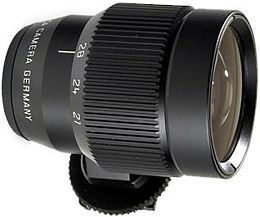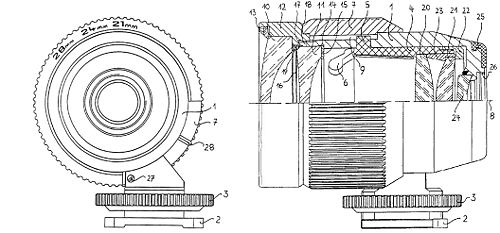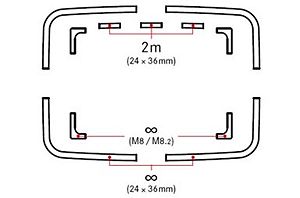12013
From Leica Wiki (English)
Jump to navigationJump to search
- Code name - 12013
- Production era - 2006-Current
- Type - Black enclosed metal viewfinder for 21, 24 and 28 mm lenses
- Variants - 12014 black and silver version
- Designers - Bernd Harand and Antje Brethauer, 13 Mar 2002
- US patent 6643462 description - 1.housing 2.flash-shoe adaptor 3.knurled ring 4.cylindrical variator 5.guide pin 6.curved track 7.rotating ring 8.longitudinal axis 9.longitudinal groove 10.lens 11.lens 12.barrel 13.screw ring 14.circumferential groove 15.snap ring 16.mask 17.nose 18.cutout 19.elastic ring 20.lens 21.lens 22.retaining ring 23.spacer ring 24.lens 25.rubber cap 26.screw thread 27.resilient ball latch 28.notches 29.spring 30.pin
- Manufacturer's description - The basic design of the viewfinder mechanism of the Leica M limits the image field view in such a way that bright line frames for focal lengths below 28 mm cannot be included in any of the viewfinder configurations. In the case of the 0.85X viewfinder the bright line frame for the 28 mm focal length is also no longer possible to include. To ensure that the wide-angle lenses for the Leica M can be used optimally with all viewfinder magnifications, an accessory viewfinder for 21/24/28 mm lenses is provided. It slides into the accessory shoe, and is secured by a clamping screw. The desired finder field is then selected by simply turning a thumbwheel, which has a click stop at each of the three possible settings. The focusing and exposure control are handled as usual by the Leica M's combined viewfinder/rangefinder. The viewfinder for 21/24/28 mm lenses is also suitable for eyeglass wearers, since its ocular is rubberized to protect glasses from scratches. As an alternative, it is also possible to use M system correction lenses. When not in use, the accessory viewfinder is housed in a furnished leather case.
The finders have parallax compensation markings for distances below 2 m and also markings for the slightly smaller image field of LEICA M8 models. They can therefore be used just as well for film photography (24x36 mm) as for digital photography (18x27 mm).
The entire optics are given a high-quality multi-layer coating to guarantee optimum viewing through the finder in all conditions. The high-quality metal body of the finders is designed in the popular retro look of the fifties and sixties, but are milled from solid brass according to the latest technologies and then given a silver-chrome or black paint finish to match the cameras. The eyepiece side is rubberized to protect eyeglasses.
Comment
- Reviews
- Forum discussion


